The High Achiever’s Trap: Why Pushing Harder Is Not the Answer to Better Health
Say hello to Mary. Mary is the woman who has it all together. Her calendar is blocked and color coded. She gets her inbox to zero every day. She’s the person others go to when they need someone they can trust to get things done. She solves hard problems with focus and stamina.
When Mary decided to work on her health, she brought that same determination. She downloaded meal plans and signed up for a new workout program. She promised herself she would be in bed by ten on the dot and up at five for 30 minutes cardio. For two weeks she felt strong and in control. Then she felt herself start to slide back into old habits. The more she pushed, the more tired she felt. The more rules she added, the more she second guessed herself and wondered why she couldn’t keep up.
Sound familiar?
High achieving women are conditioned to believe that more effort always creates better results. That reflex works in boardrooms and classrooms, but it fails our bodies. The push that builds a business can drain your energy and trash your nervous system.
The high bar that you’ve set for yourself to push through it all and achieve your goals no matter what doesn’t translate well when you’re talking about your health.
This is the high achiever’s trap.
We believe that better health lives on the other side of more.
More restriction.
More hours.
More willpower.
But expecting more and doing more leads to burnout and frustration because our bodies aren’t meant to live in a constant state of “more”.
What the trap looks like in daily life
It’s easier to recognize the trap when we name its patterns.
#1 You stack goals all at once.
You try to improve sleep and nutrition and cardio and strength and stress and supplements at the same time. You wake up with a plan and end the day frustrated because life happened.
#2 You treat exercise like a report card.
Scheduling a couple of workouts a week to get started isn’t trying hard enough. You want to go all in with 5 days per week and feel like a failure if you can’t keep up. You push yourself even when your body is begging for a break.
#3 You create food rules to feel safe.
You count your calories and macros faithfully. You restrict your diet and remove anything that might cause a problem. You’re up for the next diet trend because maybe this one will work if you can just dial it in.
#4 You schedule recovery like an afterthought.
You allow yourself to sleep once you’ve crossed everything else off your list. Late nights are a habit, and breaks are few and far between. You rely on caffeine and willpower to get you through, promising yourself once this next project is done, you’ll take more time for yourself.
If you’re feeling called out right now, I get it. Because I am guilty of every one of these.
I’ve been there, wondering why I couldn’t be my version of super woman.
If I had everything covered at work, my personal goals would suffer and vice versa.
Despite what society had told me was possible, I couldn’t do it all.
Not the way I was used to doing things anyway.
Why pushing harder fails in a human body
Your body runs on rhythms.
There is a daily rhythm driven by light, food, and exercise.
You have a stress response that is meant to help you survive short bursts of challenge and an immune system that watches for threats and repairs damage. When we push without recovering, those systems shift into survival mode.
Stress hormones rise to help you deliver on deadlines and workouts. Cortisol is not a villain. It keeps you alert and able to respond. The problem is duration. When elevated stress becomes the background noise of your life, it disrupts sleep, appetite, and focus. You may notice you are tired and wired at night, yet sluggish in the morning or that you have cravings that fight your best intentions. Where once you could roll with the punches, now you might be impatient and frustrated.
Inflammation also starts to build in your body.
Inflammation is a natural part of healing. It becomes a problem when it stays elevated. Chronic stress, poor sleep, and under recovery can create a steady trickle of inflammatory signals. That trickle shows up as brain fog, joint aches, stubborn weight changes, or digestive irritation. It is subtle at first, then it becomes the new normal.
Blood sugar swings add to the picture. When meals are rushed or unbalanced, the body rides a roller coaster of highs and lows. The dip is when the afternoon slump hits. You reach for caffeine or sugar to get through a meeting. You get a short-lived boost and then you crash. Over time this cycle teaches the body to expect quick energy and the cravings get louder.
Sleep ties all of this together. Without regular, good quality sleep, your brain and body cannot do the overnight maintenance they are designed to do. Memory consolidates during sleep. Hormones that regulate hunger and fullness reset. Muscles repair. The immune system does its cleanup work. When sleep is short or broken, everything the next day takes more effort.
Pushing harder keeps the body in survival and puts your long-term health at risk.
What the data tells us about women and overload
The experience you carry is not a personal failure. It’s part of a wider pattern.
Nearly half of women report burnout at work. Many women in their mid-thirties and beyond say that fatigue and brain fog limit what they can do. You dread looking at your calendar because you know you don’t have the energy to do it all. You know exactly what you want, but the effort just seems like more than you can handle.
Unfortunately, burnout and overload are not fixed with more structure or a tighter plan. They are resolved when we reduce the total load and choose the few actions that move the needle.
The reframe that changes everything
Instead of asking what more you can do, ask a different question.
What can you do less of that will help you feel better?
The answer might be less late-night scrolling. It might be fewer back-to-back meetings. It might be less cardio this month and more walks that calm your nervous system. It might be fewer hard rules with food and more consistent meals that you actually enjoy.
Less is not laziness.
Less is strategy.
Less creates space for the body to heal and for your mind to rest.
Less allows your effort to become effective.
Find your keystone habit
When your plate is full, you do not need ten new habits.
You need one keystone habit that reduces stress and lifts energy.
Here are examples:
- Go for a short walk before you start work for the day
- Eat 20g of protein at breakfast
- Choose a consistent bedtime and set an alarm so you don’t forget
- Set aside three minutes between meetings for some deep breathing exercises
- Schedule a fifteen-minute reset on Sunday to plan your meals and workouts
Choose one that feels realistic. Practice it for one week. Notice what improves. Then decide whether to add another small step or keep building consistency.
The real story behind motivation
Most people think motivation drives action. In truth, action creates motivation. When you do one helpful thing today, your brain learns that change is possible. That small success reduces the pressure you feel. Reduced pressure lowers stress. Lower stress improves sleep and food choices. The cycle continues.
This is why the all at once approach fails. When we try to do everything, we do nothing consistently. Then we feel disappointed and assume discipline is the problem. It’s not. The problem is an impossible plan. When you shrink the plan to one clear step, you start winning.
A one-week experiment for the high achiever
Treat your health like a meaningful experiment instead of a perfection test. For the next seven days, try this simple plan:
Day one. Set a bedtime you can keep for the next week. Put your phone to charge in another room. Write down three things that would make tomorrow feel easier.
Day two. Eat a protein rich breakfast. If mornings are chaotic, prepare it the night before.
Day three. Put a three-minute breathing pause in your calendar twice today. After lunch and before you finish work. Keep the appointment with yourself.
Day four. Walk for fifteen minutes outdoors. If you have time, add five minutes of strength work like squats, wall pushups, and a plank.
Day five. Eat a balanced lunch. Check in with yourself in the afternoon. How do you feel?
Day six. Choose one food you love and enjoy it as part of one of your meals. Satisfaction reduces the urge to graze.
Day seven. Reflect. What felt easier? What created the most energy for the least effort? Pick one habit to carry into next week.
Metrics that actually matter
We tend to focus on the scale for dieback. Did our weight go up or down? As if it were so simple! The scale is only one data point and it’s not even a good one because it doesn’t tell the full story. A single number can’t tell us whether we’re getting better or not.
Think about other things you can measure that make a difference in your day:
- How’s your energy in the afternoon?
- How was your sleep? Did you go to sleep easily and stay asleep?
- Did you wake up feeling refreshed or tired?
- Are your clothes fitting better?
- Did you feel less stressed today?
These markers are connected to the changes you want in your life, not just a number on the scale. They can tell you if you’re moving in the right direction or not.
If you’re still feeling a little overwhelmed and want some help getting started, I have a new program launching later this month. It’ll take about an hour to complete the workbook, we’ll have three short live trainings in our Facebook group, and you’ll get 30 minutes 1:1 with me to review your goals. Registration opens September 15th. Join the wait list here and receive a 10% discount.



